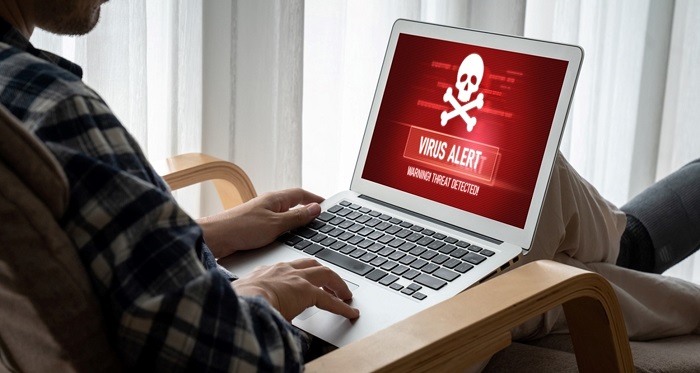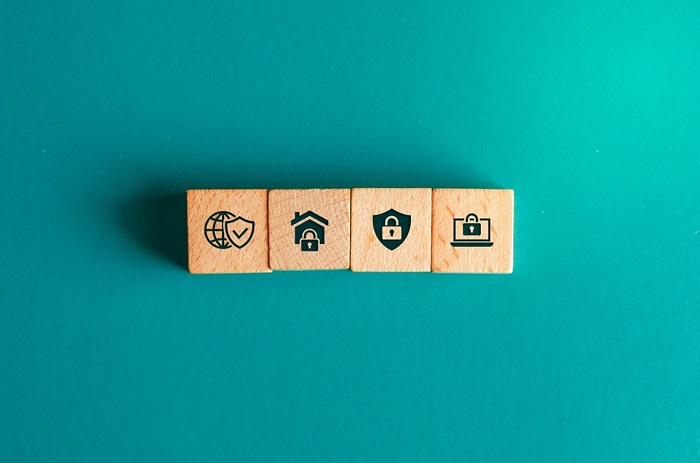
October is a spooky month, and not just because of Halloween. Back in 2004, the president of the United States and Congress designated October as Cybersecurity Awareness Month, bringing attention to a scary reality affecting households all across the country: being online can be a risky activity.
That said, there are several easy steps you can take to minimize risk and protect yourself. We’ll guide you through some of them so you don’t have to give up on the internet.
Clicking and Opening Unknown Links or Files
Email phishing scams are among the most common and dangerous tactics used by hackers and other parties to prey on consumers.
On the surface, these emails seem to appear from reputable and familiar sources –such as your local bank branch, for example, or even your internet service provider. They sometimes ask you to click on a link that will install malware on your device. These phishing emails will also redirect you to a page where it’ll ask you to fill out sensitive information such as addresses, birthdays, bank account information, and so on.
The best way to protect yourself from this tactic is by inspecting your emails closely and avoiding clicking on anything suspicious. As a rule of thumb, you should be wary of any sender requesting sensitive information over email. Always make sure the sender’s email matches company records by doing a quick internet search.
Most email services allow you to report phishing emails and prevent them from re-entering your inbox in the future. They’ll also filter out scams.
Browsing Unsecured Websites
You’ve probably seen the “https” embedded in almost any URL you visit. Did you know that the “s” stands for “secure” and means the website you’re on is using a Secure Socket Layer connection? Unsecured websites, which begin with just “http,” don’t offer the same level of security. As such, any information you send is unencrypted and hackers and other predators can collect it – including your Social Security number.
The best and easiest way to protect yourself is by avoiding unsecured websites. Most browsers feature a lock symbol next to the URL to denote that you’re on a secure page.

Connecting to an Unsecured Wi-Fi Network
Free Wi-Fi is widely available these days – but it comes with a catch. Some of these internet connections are unsecured, meaning they’re particularly risky since users can access them without any password or screening process.
Hackers can intercept data sent over an unsecured network, which includes sensitive information such as bank account numbers and home addresses. If your home Wi-Fi is unsecured and public, you could take the fall for any illegal activities committed by using your Wi-Fi.
The best way to protect yourself from this risky activity is by using secured connections when you’re in public, and by guard-railing your home network with a strong password.
Disabling Security Tools
Most devices come with default security tools that protect your computer. These security features screen out phishing scams and other deceptive tactics. However, turning them off disables your only layer of protection and makes you vulnerable to all kinds of cyber attacks. The best way to stay safe is by keeping these security tools turned on. Even better, invest in antivirus software for added safety.

Online Gaming
Playing games online is fun until you accidentally download a virus or spyware. For kids, online gaming is risky for a wide range of issues. For example, if kids have access to your credit cards, they might fall victim to spending money on loot boxes, cosmetics, and other items locked behind a paywall. Online gaming is also rampant with cyberbullying and other harmful behaviors.
The best way to protect yourself and everyone at home is to avoid sharing personal information. Installing protective software that blocks harmful content is also a good idea. If appropriate, have conversations with your kids about online safety and good gaming etiquette.
Recycling Passwords
We’re all guilty of this one: as tempting and easy as it is, using the same online password for multiple accounts is a high-risk activity for clear reasons. If a hacker or any other unintended party gains access to your password, they suddenly gain access to multiple accounts – from your Netflix subscription to your mobile banking app.
Protect yourself by using different passwords for different accounts. Doing so minimizes risk and doesn’t put all your eggs in one basket. If you’re worried about not remembering all these strong passwords, you should download and use a password manager to safely store them.
Chatting With Strangers
It’s now easier than ever to chat with strangers thanks to social media and direct messages (DMs). The dark side of this development, however, is that the person on the other side of the screen is a total stranger – just ask the people on “Catfish.”
As a precaution, don’t give your personal information to people you meet online. You should also consider making your social media accounts private – otherwise you risk people using your likeness to impersonate you.

